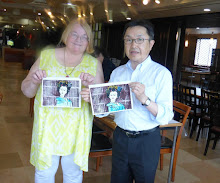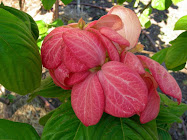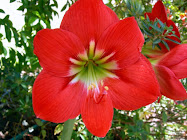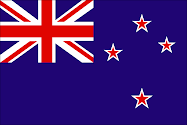Thursday 11 January
After riding on the cable car, I strolled along the waterfront of Wellington's magnificent harbour, which I thought much prettier than Auckland's.
Wellington Harbour
Academy Galleries
Founded in 1882, the Academy of Fine Arts is now housed on the ground floor of the architecturally stunning and heritage protected Wharf Offices Apartments Building in Queen's Wharf.
The Academy Galleries support New Zealand's emerging and established artists through the sale of New Zealand Art as well as fostering a national appreciation and pride of fine art produced by artists around the country.
A non-profit making private company, the Galleries is located at 1 Queens Wharf Lambton just a 2 minute walk from Downtown Wellington.
Frank Kitts Park - Climbing Lighthouse
The lighthouse was designed in the late 1980's by Mark Pennington.
Completed in the late 1980s, Frank Kitts Park on Jervois Quay in the central city, was one of the first areas of the waterfront to be developed. The design was heavily influenced by the annual street car race that ran through the area at that time.
The waterfront also bustles with a myriad of cafes, restaurants and bars. After your waterfront adventure relax with a cup of coffee or a meal. Sit back and take in the breathtaking views.
The Mast from the Wahine
The fore-mast is part of a memorial and is in Frank Kitts Park.
The Wahine was an Interislander ferry which sank on 10 April 1968. Of the 610 passengers and 123 crew on board, 51 people lost their lives.
Two violent storms merged over Wellington, creating a single extratropical cyclone storm - Cyclone Giselle hit as the Wahine was crossing Cook Strait Captain Hector Robertson entered Pencarrow Head but the Wahine hit the rocks on Barrett Reef. The radar no longer worked and winds were up to 160 km/h.
Further reading about the
Wahine disaster.
Wellington Harbour
Wellington’s magnificent harbour is a lake-like expanse of sheltered water surrounded by hills, with a narrow entrance to the sea.
A raised rock platform (a legacy of the great 1855 earthquake) surrounds the harbour’s edge. Today much of this is obscured by roads. In other places it is interspersed with sandy beaches.
In Māori the harbour is Te Whanganui-a-Tara (the great harbour of Tara) and Pōneke is the Māori name for Wellington.
Light Balls & Boatsheds
In the rear is the Star Boating Club which was formed in 1856 and is believed to be one of the oldest surviving sports clubs in New Zealand.
William Chatfield, the Thorndon Village Architect, designed the current club building on iron rails in 1885. It was later moved to Jervois Quay and is now at the Taranaki St Wharf
These spherical "balls" of which there are 33 in total, are called light balls and were created not only to represent bollards but to also provide lighting features.
Kupe, with Wife and Priest
The imposing bronze Kupe Group Statue, occupying pride of place on Taranaki Street Wharf, was originally designed in 1939 by Christchurch sculptor William Threthewey for the 1940 New Zealand Centennial Exhibition held at Rongotai, Wellington.
It was originally created in plaster and finished with bronze paint. Following the exhibition, the statue sat for 40 years at the Wellington Railway Station and ten at the Wellington Show and Sports Centre before being stored at the Te Papa, the national museum in 1997, as a national treasure. The statue was cast in bronze in 1999 as a millenium project and unveiled on 4 March 2000 as a tribute to all who have come to these shores.
The sculpture features Kupe Raiatea, the great Māori explorer and discoverer of Wellington harbour, his wife Te Aparangi and tohunga Pekahourangi.
The plaque at the base reads:
Matahourua te waka, ko Kupe te tangata, ko Hine-te-aparangi te wahine.
Kupe Raiatea the Explorer.
His wife Hine-te-aparangi.
And Pekahourang the tohunga
Sight Aotearoa, New Zealand
from their canoe Matahourua.
Circa Theatre
The theatre was formed in 1976, by an innovative group of people committed to presenting theatre of the highest possible standard.
In 1994 Circa moved to its present purpose-built site on the waterfront. Grant Tilly, one of the original Circa members, worked as theatre consultant with Ampersand Architects Ltd.
Apart from the historic brick Westport Chambers facade facing the Museum Plaza all new construction is timberThe main auditorium can seat around 250. and an extra 100 in a smaller studio space.
Harbour Walk
Click on the blue markers for photo, you can also enlarge the map.
View Wellington in a larger map






















































